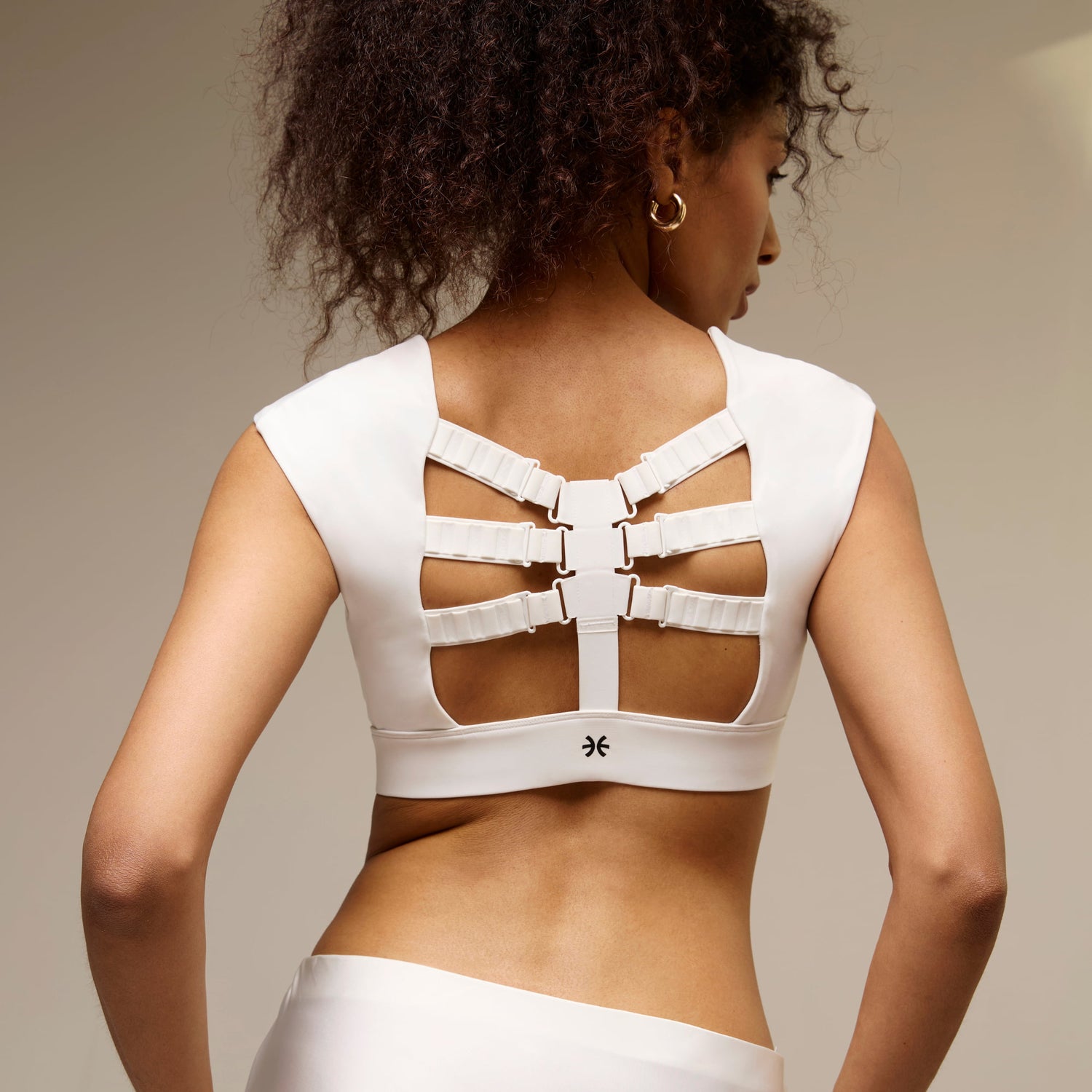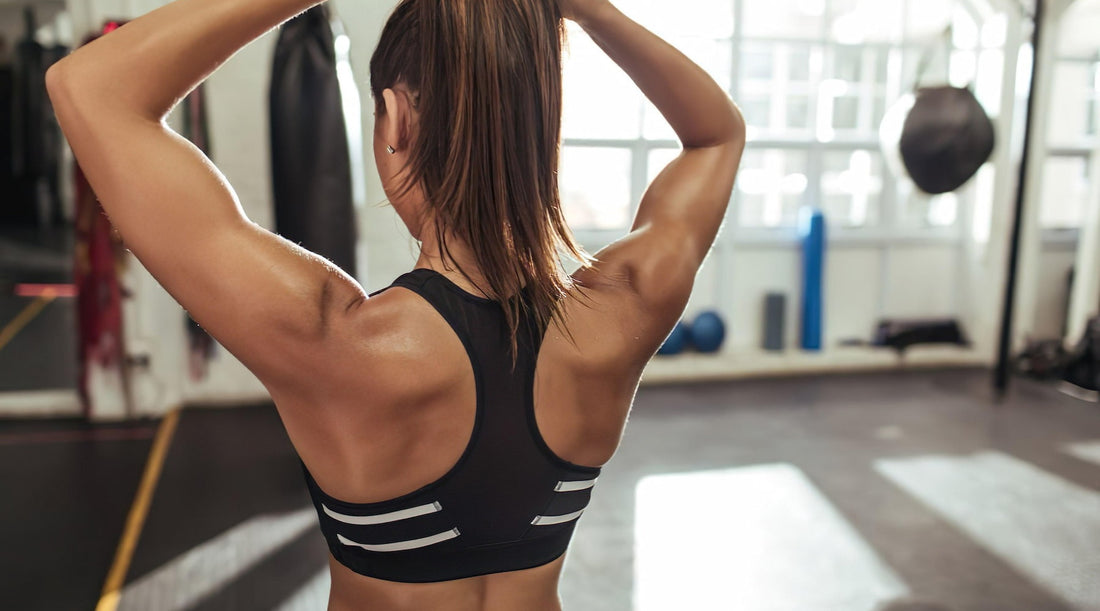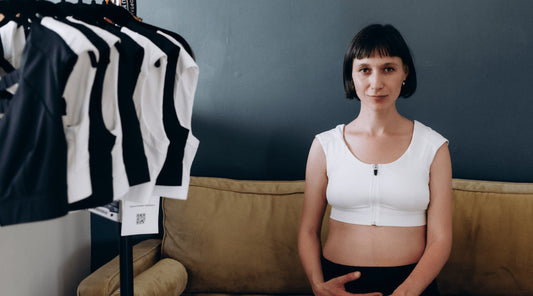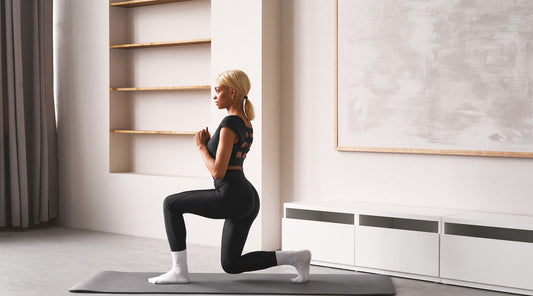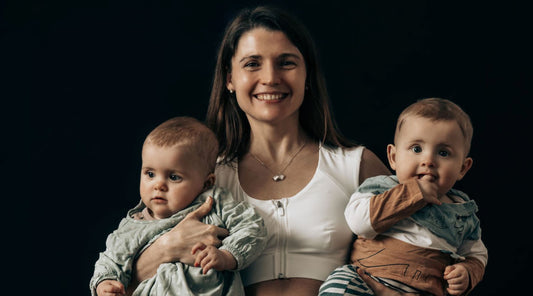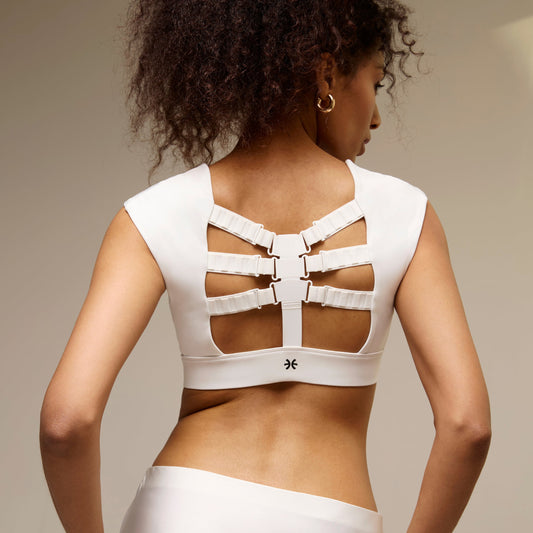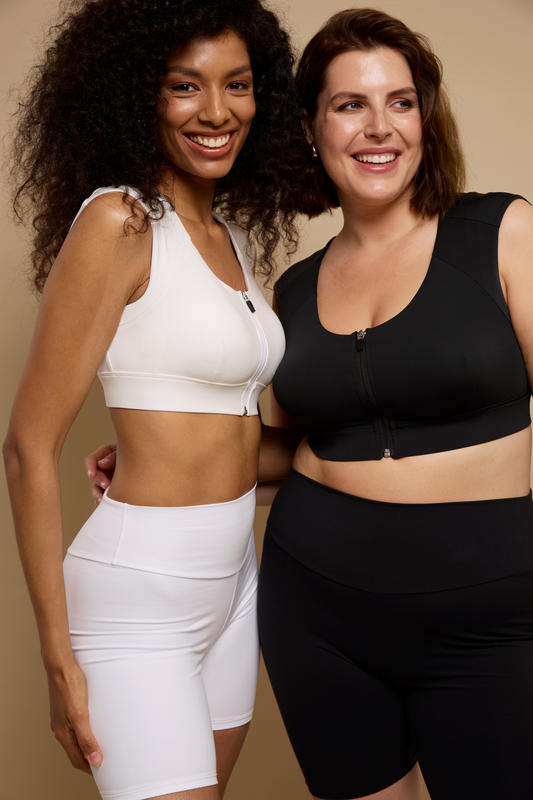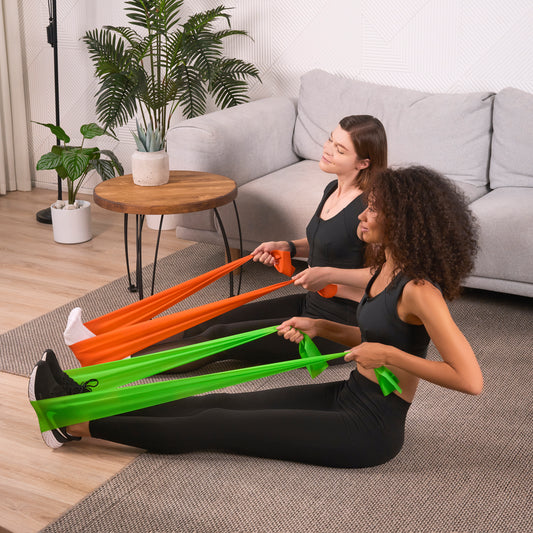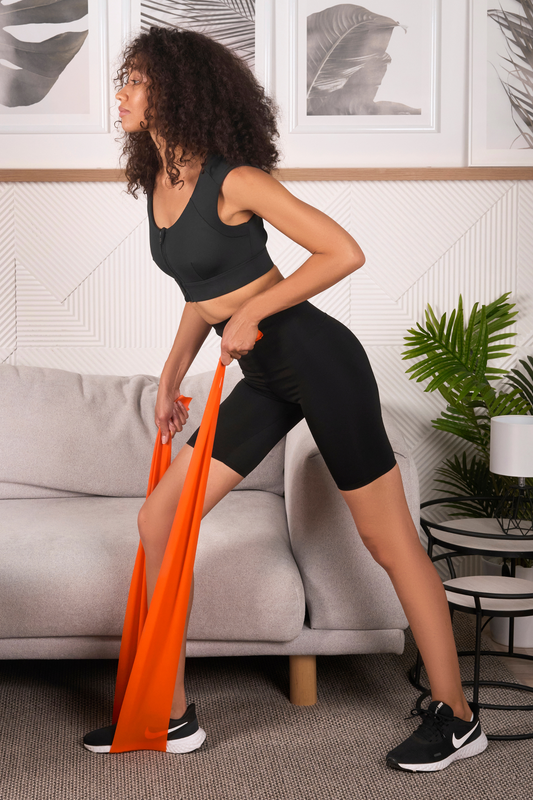Research indicates that women with smaller breasts typically wear bras that are too big, whereas women with larger breasts use bras that are either too tiny or poorly fitting.
Wearing an inappropriately fitting bra might result in a heavier weight and more pressure on your straps. Alternatively, the type of bra you are wearing may be inappropriate for your particular body and cause discomfort or even shoulder pain associated with bras.
One key element of female beauty is wearing comfortable bras that will positively impact your health without causing any issues with your body. If you think about issues like "racerback sports bra hurts my shoulders," the Etalon posture correcting bra is a fantastic solution.
Your posture will adjust negatively if the bra is too tight or loose. Spine, shoulders, and racerback bra neck pain will arise due to your posture shifting forward in your shoulders and neck since the bra is not providing enough support.
One possible reason for increased weight and strain on your straps is that you are wearing the incorrect size bra. Changes in the center of gravity might lead to upper racerback bra back pain associated with breast cancer. Breast size affects variations in spinal postures.
Causes of Neck and Shoulder Pain with Racerback Bras
Although the racer back bra has a distinctive style and can offer great support, the way the straps converge at the back can occasionally put more strain on the shoulders and increase the risk of digging. This is particularly true if the straps are linked and thin instead of thick.
Bra strap syndrome is a collection of symptoms, including arm, midback, and racerback bra shoulder pain, as well as tingling or soreness similar to pins and needles, brought on by an ill-fitting thin strap bra that applies pressure for an extended period of time. Postural abnormalities are the cause of upper-crossed syndrome.
Therefore, it is crucial to note that wearing a posture correcting bra is very beneficial for a woman’s health.
How to Choose the Right Racerback Bra
A racerback bra can provide support and comfort for a wide range of body shapes. Let’s examine a few tips that can help you pick the right bra:
- Consider your body type. To guarantee a fitting racerback bra, it is important to consider your body type. Take your time trying on several styles to see which one best suits your body shape, for instance, to avoid issues when your neck hurts because of the bra.
- Choosing the right size. Prior to buying, take an exact measurement of your body to ensure you receive the correct band and cup size. Keep in mind that brands might vary in size; therefore, it is crucial to try on several sizes to see which one fits best.
Selecting the suitable fabric. Cotton and other natural fibers are a fantastic option for everyday wear since they are soft and breathable. However, synthetic materials like nylon or polyester are better if you are looking for something that will drain away perspiration, especially when working out.
Considering these tips, selecting bras and even push ups will be easier. No matter how beautiful every element of clothing is, remember the things that won’t harm your body and health in the future.
Alternatives to Racerback Bras
Certain bra styles are made to reduce digging, but the ideal bra type for you will depend on your individual preferences and the features of your body. Consider the following alternatives:
- T-shirt Bra. The straps on a lot of t-shirt bras are wider than on other bra types. With the wider straps, there is less pressure on one spot and less chance of digging because the weight of the breasts is distributed more equally across the shoulders.
- Wire-Free Bra. Without the limitations of underwire, a wireless bra gets its support from a combination of fabric and clever design. Because of its form, there are fewer concentrated pressure points on the shoulders and a lower chance of digging because the weight of the breasts is distributed more evenly throughout the cup.
- Sports Bra. A wonderful option for reducing shoulder strain, sports bras frequently feature wide straps to support mobility.
There are many options, such as bodysuits, bandeau/strapless tops, camisoles, bralettes, and braless styles, that let you express your unique style and individuality while still providing the support and coverage you require.
Tips for Relieving Shoulder and Neck Pain
Initially, there are a few things you might think about doing to help with your neck and shoulder pain.
- Give up playing sports or other activities that might irritate the area of pain.
- After discomfort begins, apply an ice pack to the affected area for the first three days.
- Warm compresses or heating pads can be used to apply heat.
- Administer over-the-counter analgesics.
Additionally, making small adjustments to your daily routine to reduce strain on your shoulders and neck and maintaining good posture when sitting and walking can help prevent neck and shoulder pain.
Conclusion
This is a clear sign for your body when a racerback bra hurts neck. Your daily wear should not be an inconvenience but rather a source of confidence and well-being. By selecting the correct bra, maintaining excellent posture, and engaging in physical activity, you may lower your risk of developing chronic neck and back pain.
Image by A M Hasan Nasim from Pixabay
FAQs
Can wearing a racerback bra cause long-term damage to my neck and shoulders?
What are some alternative bra styles that provide better support?
How can I modify my existing racerback bras to improve comfort and reduce pain?
What should I do if I continue to experience pain despite changing bras and adjusting my fit?
How can I distinguish bra-related pain from other types of discomfort?
Trending
Try Etalon posture improvement products
